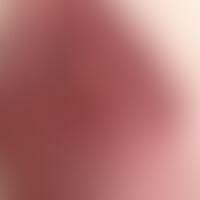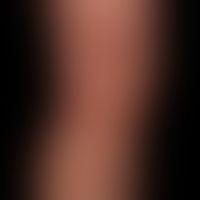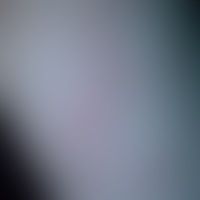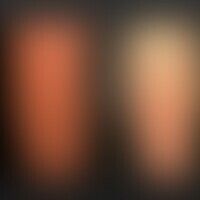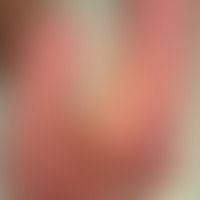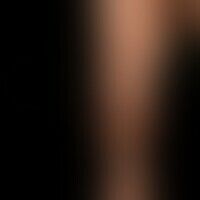
Kaposi's sarcoma (overview) C46.-
Kaposi's sarcoma endemic: chronically stationary, flat, along the skin cleavage lines localized, sharply defined, violet colored, scaly, rough, consistency increased, flatly elevated, painful plaque in a 60 year old woman; partially disseminated, blue-black papules and nodules are found on the inner side of the thigh
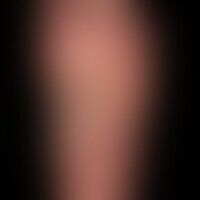
Livedoid vasculopathy L95.0
Livedovasculopathy: changes in the sole of the foot (rather rare localization)

Acrodermatitis chronica atrophicans L90.4
Acrodermatitis chronica atrophicans. cigarette-paper-like wrinkles on the edematous swollen, flat erythematous right foot. a broad erythematous stripe ran along the tibia. the patient reported pain and instability while walking, but a neuroborelliosis was excluded.
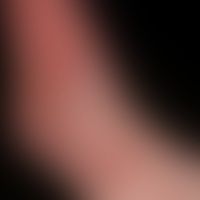
Pyoderma vegetating L08.0
Vegetative pyoderma of the back of the foot in the case of a previously known, long-standing venous leg ulcer; smearily coated wound bed, blurred edges.

Dyshidrotic dermatitis L30.8
Dyshidrotic dermatitis: chronic recurrent hyperkeratotic dermatitis of the hands and feet. recurrent episodes with itchy blisters. no signs of atopy. no contact allergy

Klippel-trénaunay syndrome Q87.2
Klippel-Trénaunay syndrome: extensive, bilateral vascular malformation of capillary (naevus flammeus) and venous vessels (varicosis with chronic venous insufficiency - CVI); distinct soft tissue hypertrophy on the left side; no pelvic obliquity!

Necrobiosis lipoidica L92.1
Necrobiosis lipoidica: Necrobiosis lipoidica, which has existed for several years in previously known diabetes mellitus, scarred healing with atrophy of the skin and subcutaneous fatty tissue.
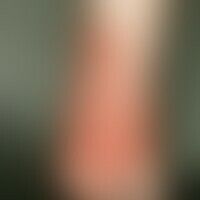
Infant haemangioma (overview) D18.01

Hypertrophic Lichen planus L43.81
Lichen planus verrucosus. multiple, chronically stationary, unchanged for months, very itchy, up to palm-sized, rough, brownish or brownish-red, verrucous plaques in the area of buttocks and thighs. highly chronic course.
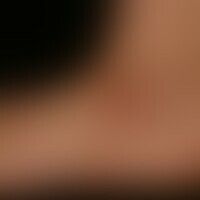
Livedo racemosa (overview) M30.8
Pronounced livedo racemosa: Intermediate findings after 2 more years (period of clinical follow-up over a period of 8 years); few lesions with very painful central necroses.
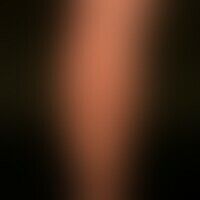
Lichen planus exanthematicus L43.81
Lichen planus exanthematicus. for 2 months persistent, itchy, generalized, dense itchy rash with emphasis on trunk and extremities (face not affected). on the cheek mucosa there are pinhead-sized whitish papules.

Nummular dermatitis L30.0
Nummular Dermatitis: For 6months persistent, itchy, eroded, excoriated, partly encrusted, coin-shaped plaques on the lower leg.
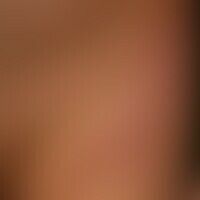
Folliculotropic mycosis fungoides C84.0
Mycosis fungoides follikulotrope: generalised clinical picture; smooth plaques that dissect at the edges, with clear follicular involvement. Moderate itching.

Hypertrophic Lichen planus L43.81
Lichen planus verrucosus. highly itchy,verrucous plaque on the left back of the foot, which has remained unchanged for years. a red-violet seam is visible in all parts of the plaques.
